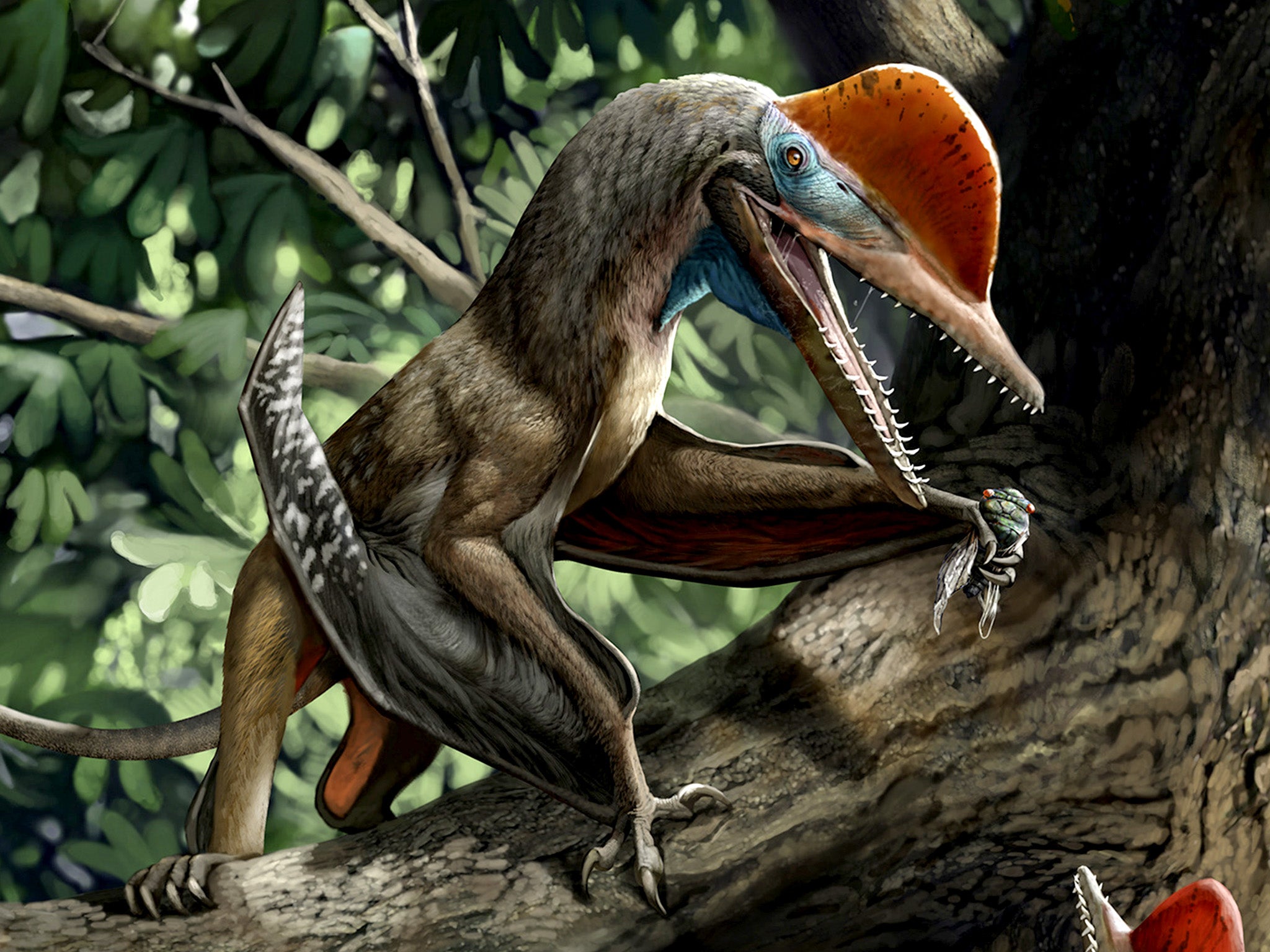Scientists uncover ‘monkeydactyl’ — the first-known flying dinosaur with opposable thumbs
Famed fossil bed throws up gripping discovery

Your support helps us to tell the story
From reproductive rights to climate change to Big Tech, The Independent is on the ground when the story is developing. Whether it's investigating the financials of Elon Musk's pro-Trump PAC or producing our latest documentary, 'The A Word', which shines a light on the American women fighting for reproductive rights, we know how important it is to parse out the facts from the messaging.
At such a critical moment in US history, we need reporters on the ground. Your donation allows us to keep sending journalists to speak to both sides of the story.
The Independent is trusted by Americans across the entire political spectrum. And unlike many other quality news outlets, we choose not to lock Americans out of our reporting and analysis with paywalls. We believe quality journalism should be available to everyone, paid for by those who can afford it.
Your support makes all the difference.Paleontologists have discovered the first-known fossil of a flying dinosaur with opposable thumbs.
Nicknamed “Monkeydactyl”, the 160-million-year-old pterosaur likely used its dexterity to climb trees and hunt for insects and other prey.
A team of international researchers unearthed the Jurassic remains in Liaoning, northeastern China, a hotbed for fossil discovery.
The monkeydactyl is the earliest known animal with the ability to touch the inside of its thumbs to the inside of its index fingers, according to the paleontologists behind the discovery.
Opposable thumbs are mostly found in mammals and some tree frogs. Chameleons are an extremely rare example of living reptiles with opposable thumbs.
Thanks to the use of a small CT scanner, scientists were able to create digital models of the monkeydactyl fossil and determine how the thumbs would have lined up with the other fingers.
Some scientists consider the ability to climb trees a missing evolutionary link which led to pterosaur flight.
The monkeydactyl is unique as it appears to have been able to do both, with a modest 33in wingspan allowing it to fly between trees.
Kunpengopterus antipollicatus, the monkeydactyl's scientific name, is derived from words meaning "opposite" and "thumb" in ancient Greek.
Its unique physical structure places monkeydactyl in a group of pterosaurs known as darwinopterans, named after Charles Darwin due to their advancing contribution to the understanding of evolution.
Rodrigo V Pegas, part of the research team, said darwinopterans are always “precious” discoveries for this reason.
Liaoning province in China is known for its extremely well preserved fossils. It is perhaps most significant to paleontologists for being the site where the Sinosauropteryx was discovered in the 1990s, leading to the now-widely accepted theory that modern day birds are descended from dinosaurs.
Researchers published their findings this week in the journal Current Biology.
Join our commenting forum
Join thought-provoking conversations, follow other Independent readers and see their replies
Comments